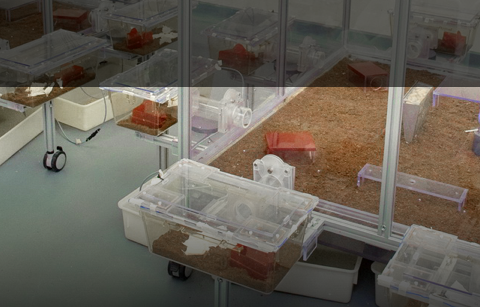Studying group organization and dominance hierarchy under semi-natural conditions
Social structures in groups of animals, formed in various natural habitats, possess a key role in animal survival across species. However, the biological mechanisms driving natural interactions between multiple animals, over long-term periods, are poorly studied and remain elusive. Rigorous and objective quantification of behavioral parameters within a group presents a major challenge, as it requires simultaneous monitoring of several individuals and automatic identification of complex behaviors. Our lab has pioneered a broadly applicable system that automatically tracks the locations of multiple, uniquely identified animals, such as mice, within a semi-natural setting (Weissbrod et al 2013). The system combines video and radio frequency identified tracking data to obtain detailed behavioral profiles of both individuals and groups. The data obtained is processed by designated algorithms to characterize individual phenotypes, interactions between pairs of mice and the collective social organization of groups.

Studying naturalistic social behaviors in lab and wild mice
In addition to standard laboratory mice, we are using wild-derived mice, which present a diverse heterogenic phenotype, including behaviors which were extinguished in laboratory mice. We have demonstrated robust differences between laboratory mice and mice derived from wild-caught individuals in several anatomical, physiological, and behavioral parameters (Chalfin et al 2014). The most striking differences between the strains were seen in the social behaviors of females. Sexually naïve wild females presented inter-female aggression and pup-directed aggression, unlike most strains of laboratory females (Chalfin et al 2014).
Lab female - Wild female -
In our current research, we are examining how these ancestor behavioral phenotypes manifest under semi-natural conditions, studying complex social behaviors in an ethologically-relevant manner. We have shown that wild-derived females, in contrast to lab females, establish solid dominance hierarchies, and identified unique rank-related behavioral personalities that distinguish males from females (Zilkha et al, 2023).










